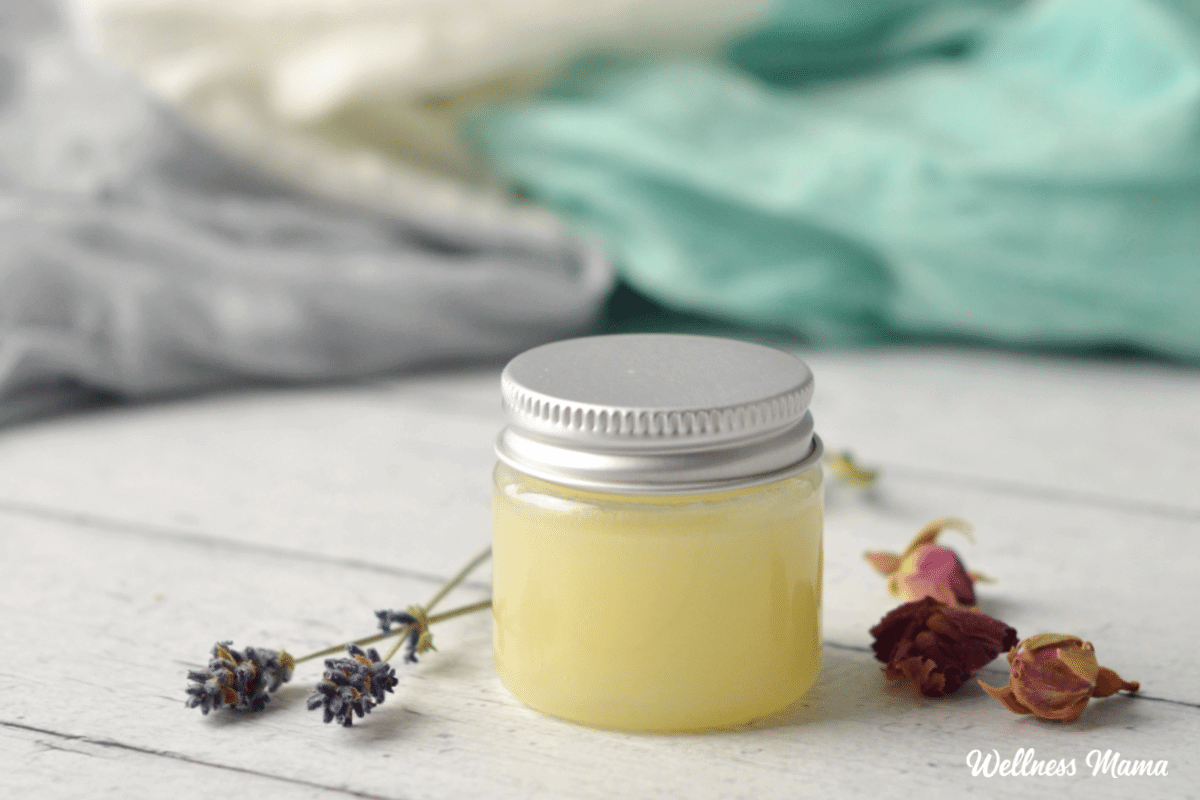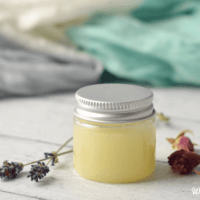Hyaluronic acid serum (HA) has gained popularity lately for its amazing ability to improve fine lines and prevent dryness. While you can get HA fillers injected by a dermatologist, there’s an easier way to get hydrated skin. This easy DIY hyaluronic acid serum whips up fast and leaves skin feeling silky smooth.
What is Hyaluronic Acid?
Pure hyaluronic acid is naturally found in many different tissues and fluids in our bodies. It was first found in the eyes, but it also helps lubricate joints like knees and elbows. Weirdly enough, you’ll also find HA in the bright red comb on top of a rooster’s head.
You can use it on your face, take it as a supplement, or have it injected as a filler. Because it’s found in synovial joints, like elbows and knees, people with stiff joints can get HA joint injections
Here are a few of the ways our body uses hyaluronic acid:
- Helps with cell differentiation
- Used in embryo development
- Helps with inflammation
- Assists with wound repair
- Is a humectant that draws moisture to the skin to improve dry skin
- Improves skin elasticity
- Reduces the appearance of fine lines
- Is firming for mature skin
- May have antioxidant properties
This article focuses on how HA is used for skin concerns.
Hyaluronic Acid for Acne
Because we naturally produce hyaluronic acid, it’s safe for a wide variety of skin types. A 2017 controlled trial found it helped reduce sebum production on oily skin. This is good news for those with acne-prone skin and breakouts. It can also help to reduce the appearance of marks when it comes to acne scars.
Mature and Sensitive Skin
It also has an anti-aging effect because it helps restore dehydrated skin and adds plumpness back. It works like collagen but absorbs better into the skin. Hyaluronic acid face serum is gentle enough for sensitive skin and improves skin tone. Almost anyone can use it in their skincare routine!
HA draws moisture to the skin for brightening, replenishing, and skin barrier repair.
What Can I Use With Hyaluronic Acid?
HA plays nice with many topical skincare ingredients. It pairs well with vitamin C, aloe, lactic acid, vitamin b5, or niacinamide. You can also use it with retinol (synthetic vitamin A), but I prefer not to since retinol can irritate skin. This yogurt mask gently exfoliates skin with natural lactic acid.
You’ll find HA in formulations for eye creams, lotions, and other skincare products.
Side Effects of Hyaluronic Acid
Adverse reactions are more common if someone is injecting HA. When it comes to using it on the skin, reactions are very rare. According to Cleveland Clinic, it’s also safe during pregnancy and breastfeeding.
The Best Hyaluronic Acid Serums
Brands like Neutrogena, Paula’s Choice, Cerave, and L’oreal Paris often have an ingredient list I’d prefer not to use on my skin. I like to make my own skincare products when I can, but sometimes it’s nice to buy something pre-made. These hydrating serums are free of dyes and parabens, and packed with healthy ingredients.
- Vitamin C with Hyaluronic Acid Facial Serum – Plant Therapy
- Ultra Hyaluronic Hydrating Serum – MyCHELLE Dermaceuticals
- Daytime Antioxidant Serum – Sally B’s Skin Yummies
- Perfecting Anti-aging Serum – Elysium
- Hyaluronic Acid – Asterwood Naturals
How to Use Hyaluronic Acid
HA works best on damp skin so I use it after a cleanser or shower. You can follow it up with a light layer of serum or moisturizer. Niacinamide face cream or vitamin C serum are good options. Hyaluronic acid works best if applied 1-2 times a day.
A Note on Different Types
There are a lot of HA products out there on the market. If you’re making your own, it can get even more confusing. HA in liquid form isn’t 100% hyaluronic acid because it’s been diluted in a water-based ingredient. That’s not necessarily a bad thing, but it can make figuring out how much to use in DIY skincare difficult.
Also, HA with a higher molecular weight doesn’t absorb as well into the skin. So if you’re buying powdered HA from an ingredient supplier, they’ll sometimes have multiple types of HA available. The type I use in this recipe is sodium hyaluronate. It’s in powder form, is 100% HA, and is easily absorbed. This makes it easier to get a safe and effective dilution ratio in DIY products.
DIY Hyaluronic Acid Serum Ingredients
- Hydrosols – These are skin soothing and great for the skin. Rose, lavender, tea tree, helichrysum, or calendula are some good options.
- Distilled water – If you don’t want to use a hydrosol, then distilled water will also work. It won’t last as long without a preservative though.
- Jojoba oil – Closely mimics skin’s sebum and helps lock moisture in. Can substitute with other carrier oils if preferred, like avocado, olive, sea buckthorn, etc.
- Glycerin – Like HA it’s a humectant to help draw moisture to skin and leaves skin feeling soft.
- Natural preservative – Because this is a water-based serum it naturally has a short shelf life (1-2 weeks). A natural preservative, like this one made with coconut and fermented radish root, helps it last for months.
- Hyaluronic Acid – The star of the show. I’m using a powdered version instead of a pre-diluted liquid.
- Essential oils – I used lavender, but you can use any skin safe essential oil you prefer. Tea tree, rose, frankincense, and orange are all good options.
Hydrating Hyaluronic Acid Serum DIY
Equipment
Materials
- 1 TBSP hydrosol or distilled water
- 2 tsp hydrosol or distilled water
- ⅛ tsp hyaluronic acid powder
- ¼ tsp glycerin
- ½ tsp jojoba oil
- ¼ tsp Leucidal complete preservative optional
- 5 drops lavender essential oil (or other skin safe essential oil)
Instructions
- Pour the 1 Tablespoon plus 2 teaspoons cold water or hydrosol into the small bowl and then sprinkle the hyaluronic acid powder evenly over the surface.
- Mix until combined, about 1-2 minutes.
- Add the rest of the ingredients and stir or whisk to combine.
- Pour the serum into a 1 ounce jar.
Notes
Container note: Since the serum is on the thick side, I prefer to store it in a jar. There’s a higher risk for product contamination though, so make sure you use clean hands to apply!
What ingredients do you like to use in your skincare routine? Leave a comment and let me know!



Leave a Reply